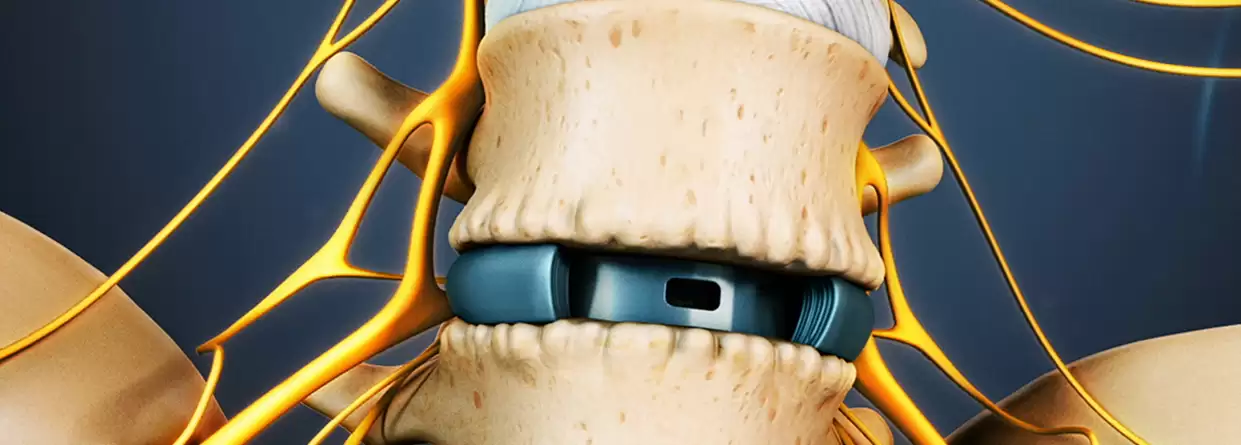Lumbar Spine Surgery
Neurosciences |
Posted on 06/06/2021 by Dr. Sanjeev Singh
Lumbar surgery or Laminectomy refers to any type of surgery in the lumbar spine, or lower back, between one or more of the lumbar vertebrae.
The lumbar region of the spine, more commonly known as the lower back, consists of five vertebrae labeled L1 through L5. The lumbar region is situated between the thoracic, or chest, region of the spine, and the sacrum. The lumbar spine typically has a slight inward curve.
Common ailments associated with lumbar Spine
Most cases of lumbar degenerative disc disease consist of low-grade, continuous but tolerable back pain that will occasionally intensify for a few days or more.
Symptoms can vary, but general characteristics usually include:
- Moderate, continuous low back pain. Painful aches at the site of a damaged disc are the most common symptom of a degenerative disc. Pain may spread to the buttocks, groin, and upper thighs.
- Occasional pain flare-ups, back pain may intensify for several days or weeks then return to a more moderate level. Flare-ups happen as the disc continues to degenerate and the spine gradually stabilizes. Pain flare-ups can be severe and sudden, and can temporarily reduce mobility.
- Local tenderness, the area of the low back surrounding the degenerated disc may be sensitive to touch.
- Leg pain and neurological symptoms including numbness, weakness, or sharp, shooting pains in the buttocks, hips, and/or back of the leg may be felt if the disc space collapses enough to pinch a nerve root exiting the spine.
Common types of lumbar spine surgery-
- Vertebroplasty and kyphoplasty are procedures used to repair compression fractures of the vertebrae caused by osteoporosis
- Spinal laminectomy/spinal decompression: These are performed when spinal stenosis causes a narrowing of the spinal canal that results in pain, numbness, or weakness
- Discectomy is a procedure used to remove a disc when it has herniated and presses on a nerve root or the spinal cord
- Foraminotomy: In this procedure, the surgeon enlarges the bony hole where a nerve root exits the spinal canal to prevent bulging discs or joints thickened with age from pressing on the nerve
- Nucleoplasty: Also called plasma disk decompression, it is a laser surgery that uses radiofrequency energy to treat people with low back pain associated with a mildly herniated disk
- Spinal fusion: In this procedure, the surgeon removes the spinal disc between two or more vertebrae, then fuses the adjacent vertebrae using bone grafts or metal devices secured by screws
- Artificial disk replacement is considered an alternative to spinal fusion for the treatment of people with severely damaged disks
Pre-conditions to consider before lumbar spine surgery?
Preparing for Lumbar spine surgery goes beyond preparing yourself mentally and physically.
- Stop taking medications, pain relievers, and vitamin supplements two weeks prior to surgery. If there are medications or supplements you must keep a log of these to review with your surgeon prior to surgery
- If you smoke, stop two weeks prior to surgery. Smoking increases the risk of serious complications with any surgery
- Prepare your hospital stay
- You should stop eating any solid foods after midnight before your surgery.
Post-operative precautions after lumbar spine surgery?
- Following your surgery, you may not be able to sit for extended amounts of time, because your spine and back muscles need to heal first
- In the first two to three days after any type of lumbar surgery, sitting for minimal amounts of time is recommended, basically only to get in and out of bed and to use the toilet
- After that first few days of extremely restricted activity, you should still try to minimize the amount of time you spend sitting. If you need to sit, only use straight-backed chairs to minimize the pressure on your lumbar region–no sofas or recliners that will put a strain on your low back and lumbar area. If you need to lie down, you may only do so in a bed
- Follow your surgeon’s specific instructions tailored to your individual needs
- Avoid lifting (nothing more than 5 Kg or above shoulder level), stooping, pushing, bending, or straining for a minimum of six weeks. Depending on the surgery and how fast you are healing this could extend into a few months.
Lumbar spine surgery recovery time
Even the least invasive surgery may cause a great deal of pain as your muscles, bones, and nerves recover. Total recovery time can take anywhere from eight weeks to six months, depending on a number of factors like severity of condition, age, health, and type of surgery performed. Post-surgery, you will be prescribed pain medication. If you do not feel your pain diminishing, or you notice unexplained or increased leg pain, unusual swelling, bruises, changes in behavior, or a high-grade fever in the first two to three weeks of recovery, contact your doctor immediately. These symptoms may indicate an infection or a more serious condition.

 Ambulance Services: 07340054470
Ambulance Services: 07340054470